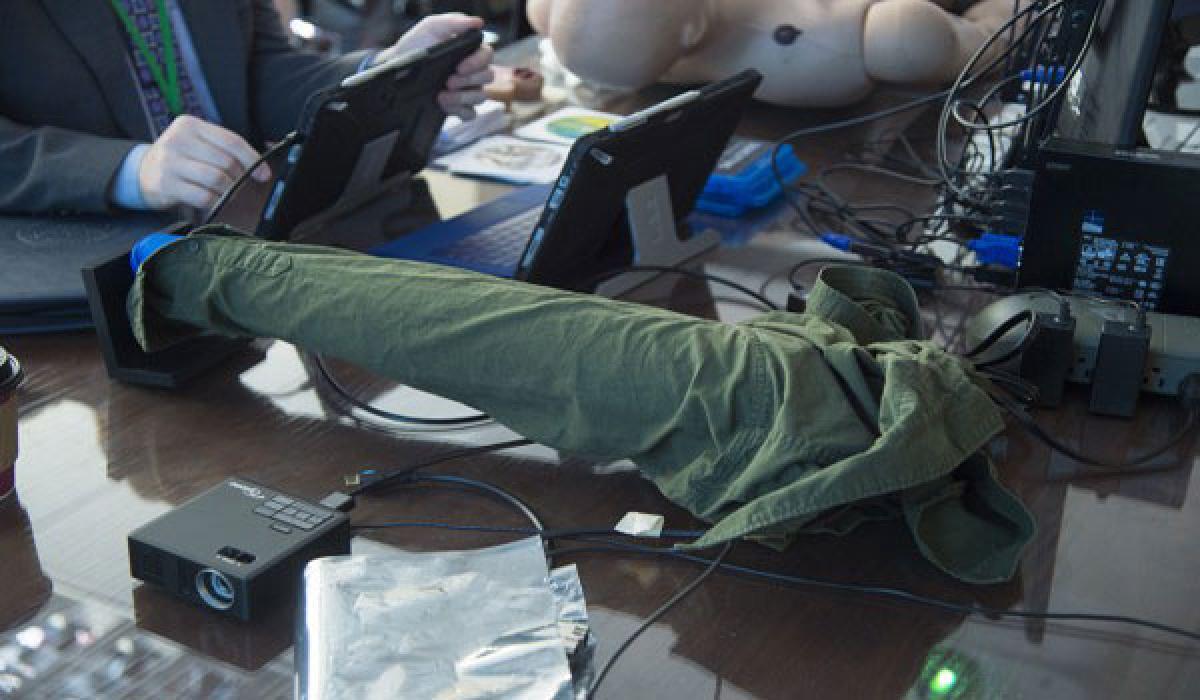Live
- MyVoice: Views of our readers 14th December 2024
- Soros & Gandhis links raise many disturbing questions
- Record additions in non-fossil fuel energy in India
- Indian teens’ grand arrival on world stage
- Chanchalguda Jail Officials Say They Haven't Received Bail Papers Yet, Allu Arjun May Stay in Jail Tonight
- BJP leaders present evidence of illegal voters in Delhi, urge EC for swift action
- Exams will not be cancelled: BPSC chairman
- Nagesh Trophy: Karnataka, T.N win in Group A; Bihar, Rajasthan triumph in Group B
- YS Jagan condemns the arrest of Allu Arjun
- Economic and digital corridors to maritime connectivity, India and Italy building vision for future, says Italian Ambassador
Just In
Mannequins to enhance skills in pat-down security procedures


Every day, the Transportation Security Administration screens more than 2 million passengers at airports nationwide. To get people to their destinations securely, TSA officers use a combination of technological and manual procedures, including pat-downs. Manual procedures are a key component of the screening process, and are part of various security measures both seen and unseen.
Every day, the Transportation Security Administration screens more than 2 million passengers at airports nationwide. To get people to their destinations securely, TSA officers use a combination of technological and manual procedures, including pat-downs. Manual procedures are a key component of the screening process, and are part of various security measures both seen and unseen. Pat-down procedures are used to determine whether prohibited items or other threats to transportation security are concealed on a person.
To ensure that TSA officers receive the best training, the Department of Homeland Security (DHS) Science and Technology Directorate (S&T), in collaboration with the TSA Office of Requirements and Capabilities Analysis, is working to develop the Pat-down Accuracy Training Tool. Also known as PATT, this tool is being developed as a stand-alone mannequin in both male and female body types.
PATT will contain a “sensored” layer capable of measuring the amount of pressure applied to various areas of the mannequin during a standardized pat-down procedure. The sensors will measure pressure applied during screening and analyzed by its training software.
The female version has approximately 2,000 sensors, while the male version has approximately 1,900. PATT is connected to a computer, which will provide visual, objective feedback to the employee in training, increasing their awareness and help improve their ability to conduct the pat-down procedure.
The PATT Tool will be instrumental in teaching new TSA officers the standardized pat-down procedures to ensure consistency and effectiveness. TSA officers will conduct a pat-down if the screening technology alarms, as part of random or unpredictable security measures, for enhanced screening, or as an alternative to other types of screening, such as advanced imaging technology screening.
A pat-down may include inspection of the head, neck, arms, torso, legs, and feet. This includes head coverings and sensitive areas such as breasts, groin, and the buttocks. TSA officers will advise passengers of the procedure to help anticipate any actions before they feel them as pat-downs require sufficient pressure to ensure detection.
Due to the sensitivity of the process, training on pat-down procedures can be challenging. One-on-one feedback can be subjective, while traditional classroom training teaches TSA officers appropriate hand placement and position. Putting the knowledge in practice helps TSA officers refine their skills in finding on-person threats and officers would benefit from receiving objective feedback. “As I, a person in training, start conducting a pat-down, the trainer will be able to use the PATT technology to see where I’m applying pressure.
Is it the right amount of pressure? Am I missing areas I should be looking at?” said S&T First Responders Group Program Manager Ajmal Aziz. “This lets a trainer or trainee effectively address how they are conducting pat-down procedures while increasing awareness.”
Pilots to evaluate the effectiveness of PATT will be implemented at the TSA Training Academy in Glynco, Georgia, and at select airports like Los Angeles International Airport. The increased training repetitions with objective feedback will make pat-down procedures more consistent and effective and ultimately improve the security of the traveling public.
Future versions of PATT, including the software, could be tailored for specific organizational needs as well. “Training without feedback is akin to learning how to drive a car with no working gauges,” said David Band, PATT TSA technical monitor.

© 2024 Hyderabad Media House Limited/The Hans India. All rights reserved. Powered by hocalwire.com






